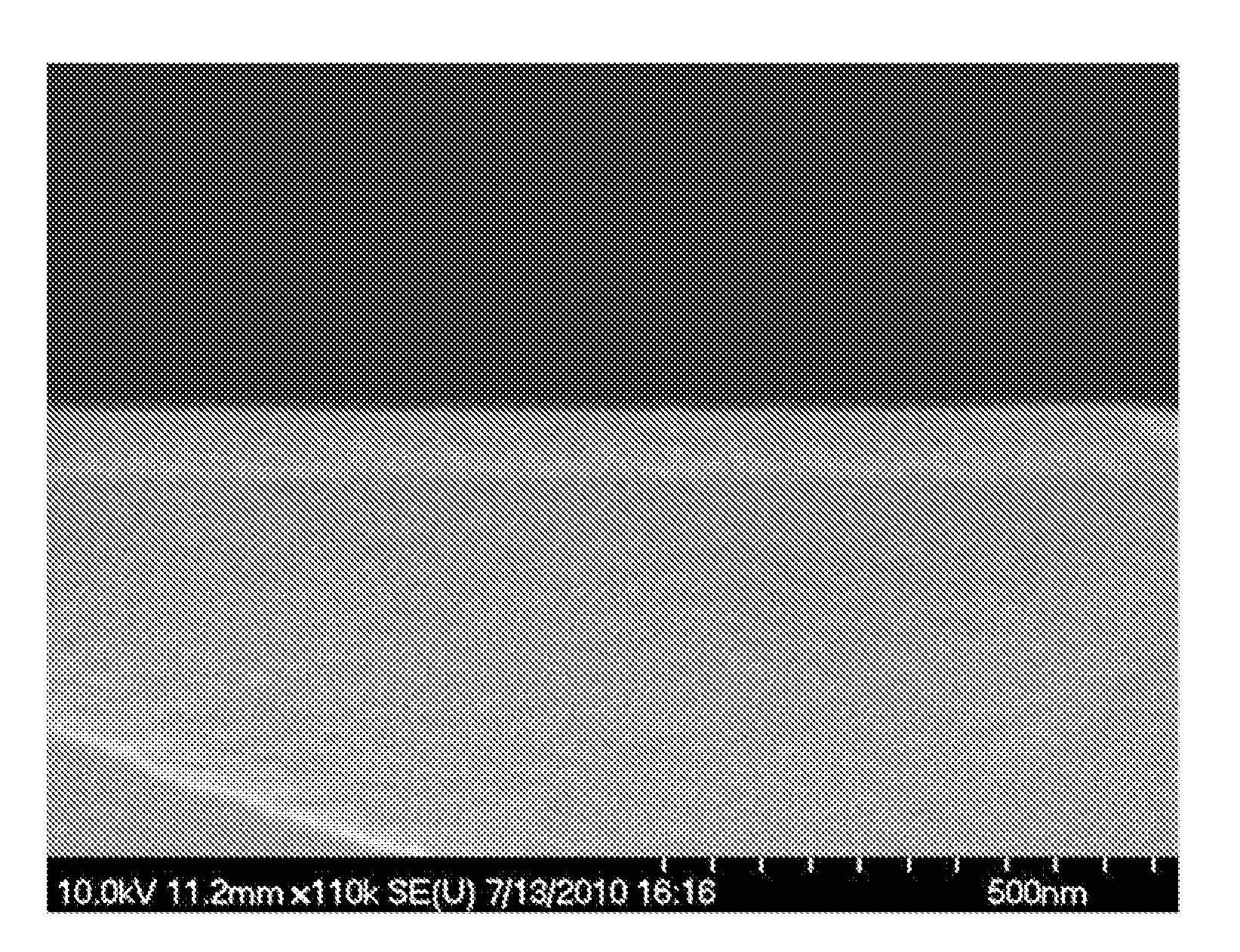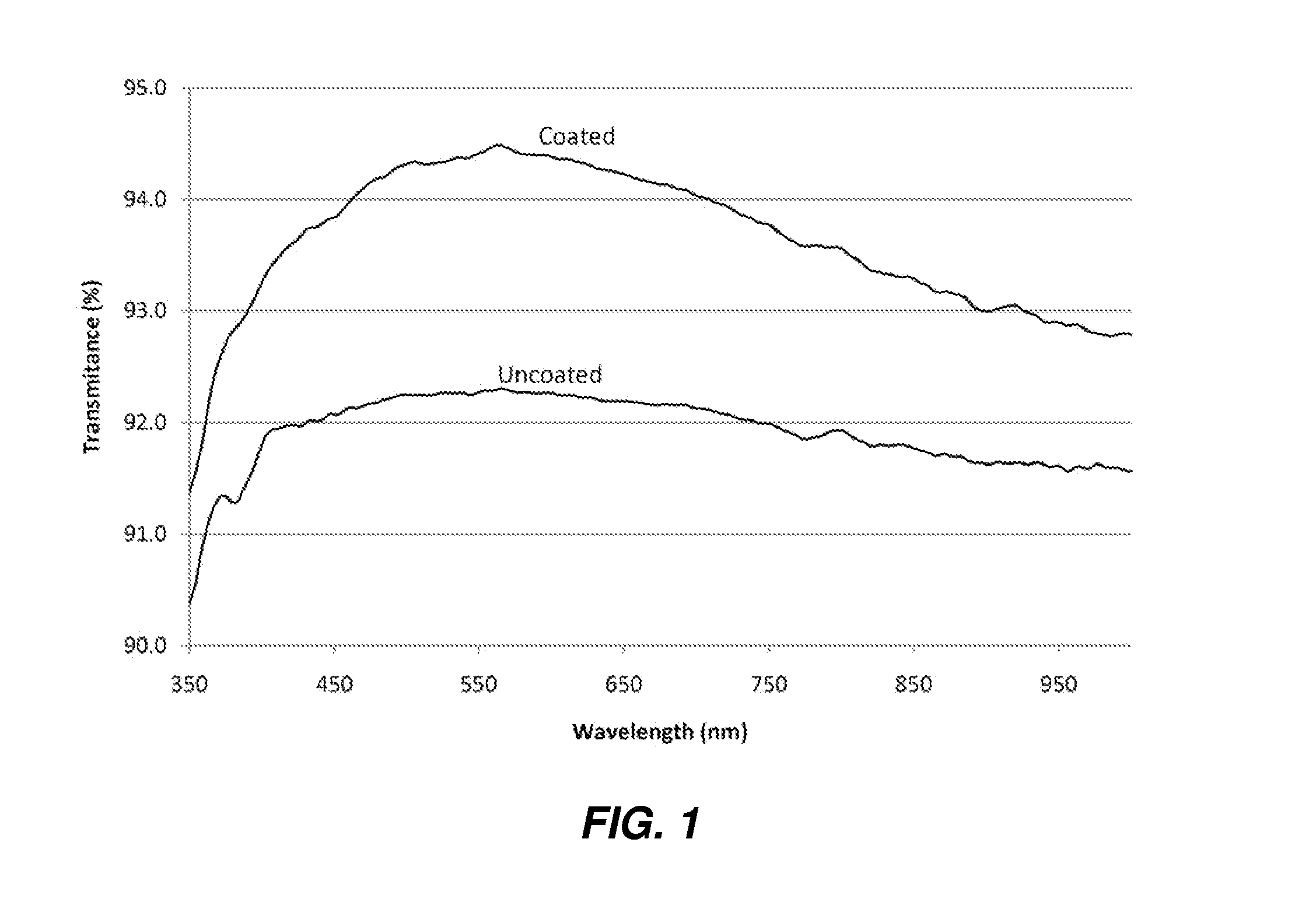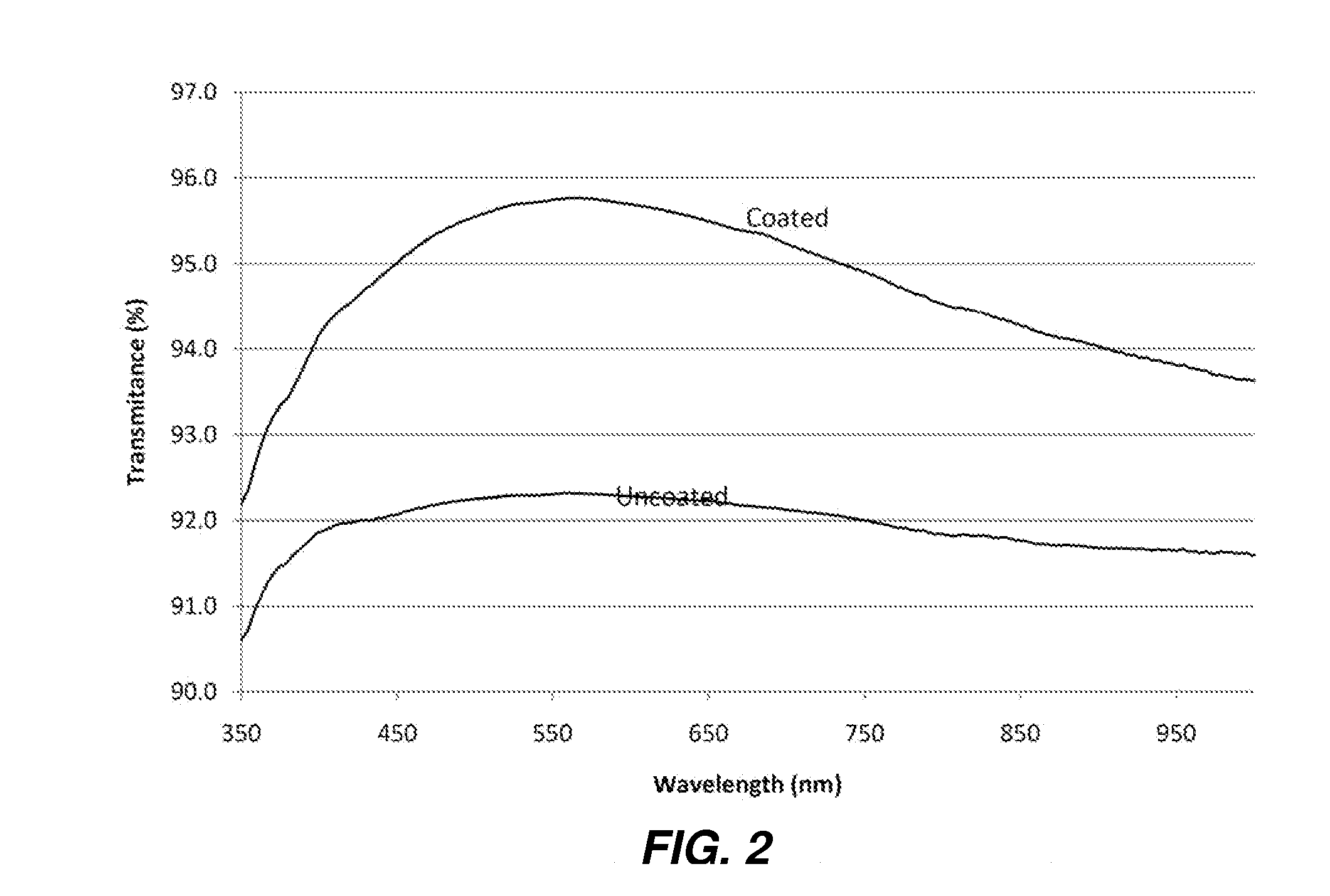Anti-Reflective and Anti-Soiling Coatings with Self-Cleaning Properties
a technology of anti-soiling coatings and self-cleaning, applied in the field of coatings, can solve the problems of significant reduction of the optical transparency of the optical element, significant expenditure of human and financial resources associated with regular cleaning of such optical elements, and dirt on the surface of the optical elemen
- Summary
- Abstract
- Description
- Claims
- Application Information
AI Technical Summary
Benefits of technology
Problems solved by technology
Method used
Image
Examples
examples
[0160]The following describes various aspects of the coatings made according to certain embodiments of the invention in connection with the Figures. These examples should not be viewed as limiting.
[0161]In one embodiment (referred to as “Example 1”), Sol I was prepared by first mixing 22.5 mL of isopropanol (“IPA”) and 2.5 mL of 0.04M HCl (pH 1.5). 100 μL of methyltrimethoxysilane (“MTMOS”) was then added to this mixture. The final solution of IPA, HCl, and MTMOS was then sonicated in a sonicator for 35 minutes. Sol II was prepared by first mixing 22.5 mL of IPA and 2.5 mL of 0.04M HCl (pH 1.5) followed by adding 100 μL of (3,3,3-trifluoropropyl)-trimethoxysilane (“F3TMOS”). Sol II was also sonicated for 35 minutes. After sonication, Sol I and Sol II were mixed in equal parts (12.5 mL each), and 100 μL of tetramethoxysilane (“TMOS”) was added. This final solution was then sonicated for 35 minutes. This mixture was allowed to age under ambient conditions for 24 hours up to 120 hours....
PUM
| Property | Measurement | Unit |
|---|---|---|
| surface contact angle | aaaaa | aaaaa |
| thickness | aaaaa | aaaaa |
| contact angle | aaaaa | aaaaa |
Abstract
Description
Claims
Application Information
 Login to View More
Login to View More - R&D
- Intellectual Property
- Life Sciences
- Materials
- Tech Scout
- Unparalleled Data Quality
- Higher Quality Content
- 60% Fewer Hallucinations
Browse by: Latest US Patents, China's latest patents, Technical Efficacy Thesaurus, Application Domain, Technology Topic, Popular Technical Reports.
© 2025 PatSnap. All rights reserved.Legal|Privacy policy|Modern Slavery Act Transparency Statement|Sitemap|About US| Contact US: help@patsnap.com



